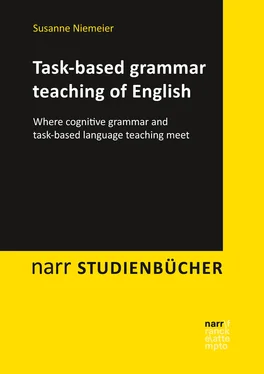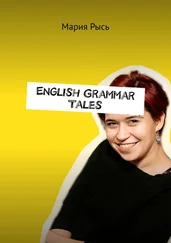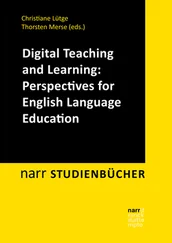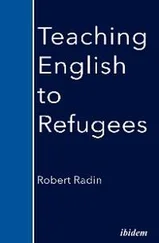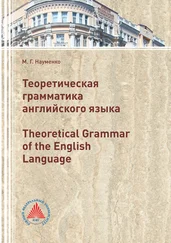There are various classifications of tasks, however, a discussion of all of them would lead too far at this point3 and therefore only three of them are briefly characterised in what follows. These three classifications are each based on different ways in which tasks can be classified and should not be mixed up when designing tasks, because tasks can be addressed from quite different perspectives depending on the learning results that are meant to be reached.
Whereas PRABHU (1987) uses a cognitive typology of tasks and differentiates between three different types of task, namely 1) information gap activities, 2) reasoning gap activities and 3) opinion gap activities, not all task-based scholars follow this differentiation. A cognitive typology such as PRABHU’s orders the tasks according to the kinds of cognitive operations involved. According to PRABHU, information gap activities are the easiest tasks and reasoning gap activities the most difficult ones (with opinion gap activities coming somewhere in between) as they involve more cognitive steps than the other two types.
Information gap activities involve “a transfer of given information from one person to another – or from one form to another, or from one place to another – generally calling for the encoding or decoding of information from or into language” (PRABHU 1987: 46). An example for such an activity could involve the creation of a weather chart, using spoken radio weather forecasts.
A reasoning gap activity involves “deriving some new information from given information through processes of interference, deduction, practical reasoning, or a perception of relationships or patterns” (PRABHU 1987: 46). This kind of activity is similar to a gap activity, however, some of the necessary information is not provided by the teacher or by the task but needs to be found out by the learners themselves. An example could be witness reports on the occasion of a lost or stolen schoolbag. The witnesses report, for instance, to have seen the bag at a certain time and at a certain location and may have observed a mysterious somebody taking it away – some witnesses saw the mysterious person’s sunglasses, others saw other parts of this person’s outfit, still others saw in which direction the person was running etc. The groups then have to pool their information and need to deduce or figure out what happened to the schoolbag.
Finally, opinion gap activities involve “identifying and articulating a personal preference, feeling, or attitude in response to a given situation” (PRABHU 1987: 47). Many examples fit this task type, from finding an end for a story via taking part in a discussion on a specific topic to collecting data on the likes and dislikes of the other classmates.
PICA et al. (1993) use a psycholinguistic typology of tasks and identify five task types, which they classify as 1) jigsaw tasks, 2) information gap tasks, 3) problem-solving tasks, 4) decision-making tasks and 5) opinion exchange tasks. A psycholinguistic typology orders the tasks according to their potential for language learning. PICA et al.’s typology is “based on interactional categories that have been shown to affect the opportunities learners have to comprehend input, obtain feedback, and to modify their own output” (R. ELLIS 2003: 215).
In jigsaw tasks, the group members receive different pieces of information and have to pool their knowledge by exchanging information in order to reach a task solution. For example, the teacher enters the class and holds up a mobile phone that was found in front of the school building and which apparently belongs to one of the English exchange students who are currently visiting the school. The learners then get different fragments from WhatsApp conversations and have to find out the correct chronology of these conversations in order to find out whose mobile phone was found.
Information gap tasks, which are best done in pair work, are somewhat similar to jigsaw tasks as again some pieces of information are missing for one of the participants and this information is then provided by the other participant. For example, the learners describe their rooms to each other and the person who is listening has to draw the described items into an empty map of a room. Then the learners change their roles and the second room map is produced. Afterwards, the learners comment on whether their rooms were drawn correctly.
Problem-solving tasks can refer to a wide variety of activities, from solving short puzzles, for example of the odd-one-out type, to solving real-life problems, such as recommending a certain course of action for something or to somebody, for example, giving directions to a stranger who asked for the way to a certain building or institution.
Decision-making tasks usually do not have a predetermined outcome, i.e., there are no right or wrong solutions. Instead, they require the participants to agree on a solution after several options have been discussed. An example could be that the learners create a huge pizza for the next class party, with toppings that everybody in the group likes.
Finally, opinion-exchange tasks do not have a predetermined outcome either, but there is no need for the group to reach a unanimous solution. An example would be a discussion on where the next class trip should lead. In such a discussion, the learners can collect the advantages and disadvantages of specific locations without having to come to a decision.
WILLIS (1996), as the third classification example, uses a pedagogic typology of tasks and speaks of six different task types, namely 1) listing, 2) ordering and sorting, 3) comparing, 4) problem-solving, 5) sharing personal experiences and 6) creative tasks. Pedagogic typologies are usually directed at learner training, most frequently the training of the four language skills. WILLIS’ typology is somewhat different and is, according to R. ELLIS (2003: 211), “based on an analysis of the kinds of tasks commonly found in text book materials. The types reflect the kind of operations learners are required to carry out in performing tasks”.
Listing can mean, for example, that the learners produce a list or a mindmap of items, activities, locations etc. Such lists could refer to things that are necessary for repairing a bicycle, animals that one would like to see in a zoo, places one wants to visit during a class trip etc.
Ordering and sorting can, for instance, refer to the fact that the learners use such a list as outlined above and rank the items on it concerning their importance, distance, or any other factor.
Comparing can mean, for example, that the learners try to find similarities or differences between what the individual group members above prepared or between what the different groups came up with. To stick to the example above, if several groups listed and ordered places and sites for an upcoming class trip, not all groups will have the same results and a solution has to be found how to evaluate the differences.
Problem-solving tasks are seen in the same way as described for PICA et al. (1993) above, with examples ranging from giving directions to finding something hidden in the classroom in some kind of treasure hunt.
Sharing personal experiences could refer to the learners’ likes or dislikes, for example, when it comes to leisure activities or music or travelling or to presenting one’s family or one’s Christmas wishes.
Finally, creative tasks are usually the most complex task type. They can be done verbally, as, for example, by writing an additional verse for a Christmas song or in rewriting a popular song, or they can result in a product, such as preparing a healthy snack, a classroom party or a school trip. WILLIS also mentions that an activity can belong to more than one task type, which is usually the case for creative tasks.
Читать дальше
